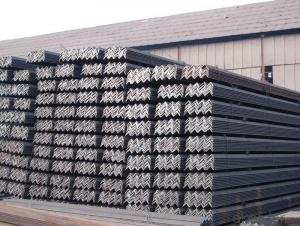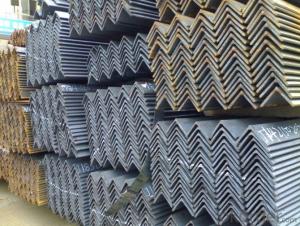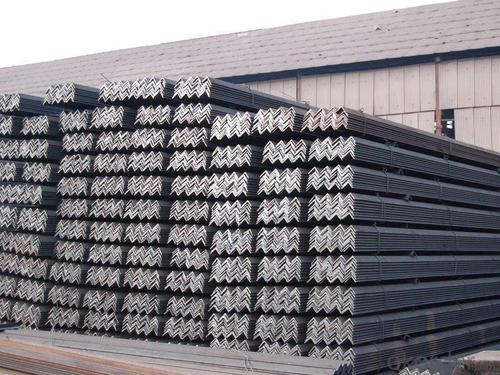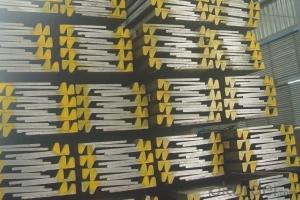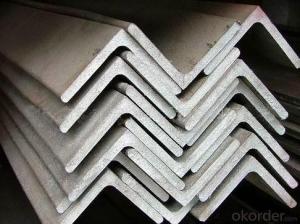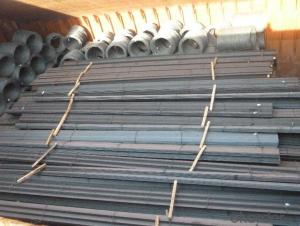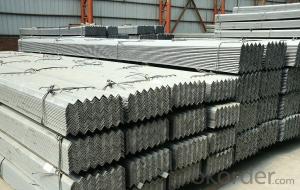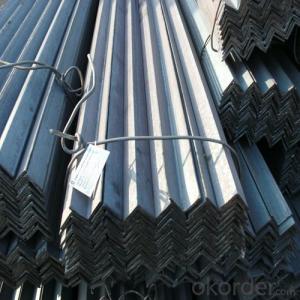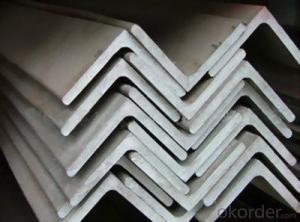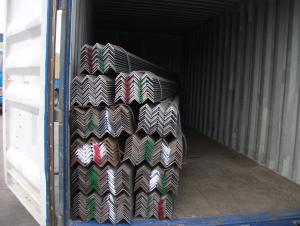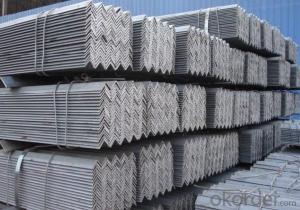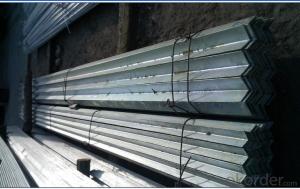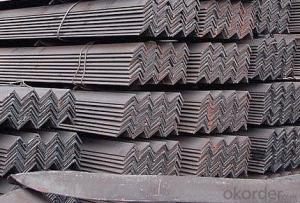SS540 Material Angle Steel High Quality
- Loading Port:
- Tianjin
- Payment Terms:
- TT or LC
- Min Order Qty:
- 25 m.t.
- Supply Capability:
- 2000 m.t./month
OKorder Service Pledge
OKorder Financial Service
You Might Also Like
Product Description:
OKorder is offering Angle Steel great prices with worldwide shipping. Our supplier is a world-class manufacturer of steel, with our products utilized the world over. OKorder annually supplies products to European, North American and Asian markets. We provide quotations within 24 hours of receiving an inquiry and guarantee competitive prices.
Product Applications:
According to the needs of different structures, Angle can compose to different force support component, and also can be the connections between components. It is widely used in various building structures and engineering structures such as roof beams, bridges, transmission towers, hoisting machinery and transport machinery, ships, industrial furnaces, reaction tower, container frame and warehouse etc.
Product Advantages:
OKorder's Angle Steelare durable, strong, and resist corrosion.
Main Product Features:
· Premium quality
· Prompt delivery & seaworthy packing (30 days after receiving deposit)
· Corrosion resistance
· Can be recycled and reused
· Mill test certification
· Professional Service
· Competitive pricing
Product Specifications:
1. Invoicing on theoretical weight or actual weight as customer request
2. Length: 6m, 9m, 12m as following table
3. Sizes
Sizes: 25mm-250mm | ||
a*t | ||
25*2.5-4.0 | 70*6.0-9.0 | 130*9.0-15 |
30*2.5-6.6 | 75*6.0-9.0 | 140*10-14 |
36*3.0-5.0 | 80*5.0-10 | 150*10-20 |
38*2.3-6.0 | 90*7.0-10 | 160*10-16 |
40*3.0-5.0 | 100*6.0-12 | 175*12-15 |
45*4.0-6.0 | 110*8.0-10 | 180*12-18 |
50*4.0-6.0 | 120*6.0-15 | 200*14-25 |
60*4.0-8.0 | 125*8.0-14 | 250*25 |
Packaging & Delivery of Angle Steel
1. Packing: it is nude packed in bundles by steel wire rod
2. Bundle weight: not more than 3.5MT for bulk vessel; less than 3 MT for container load
3. Marks:
Color marking: There will be color marking on both end of the bundle for the cargo delivered by bulk vessel. That makes it easily to distinguish at the destination port.
Tag mark: there will be tag mark tied up on the bundles. The information usually including supplier logo and name, product name, made in China, shipping marks and other information request by the customer.
If loading by container the marking is not needed, but we will prepare it as customer request.
FAQ:
Q1: Why buy Materials & Equipment from OKorder.com?
A1: All products offered byOKorder.com are carefully selected from China's most reliable manufacturing enterprises. Through its ISO certifications, OKorder.com adheres to the highest standards and a commitment to supply chain safety and customer satisfaction.
Q2 What makes stainless steel stainless?
A2 Stainless steel must contain at least 10.5 % chromium. It is this element that reacts with the oxygen in the air to form a complex chrome-oxide surface layer that is invisible but strong enough to prevent further oxygen from "staining" (rusting) the surface. Higher levels of chromium and the addition of other alloying elements such as nickel and molybdenum enhance this surface layer and improve the corrosion resistance of the stainless material.
Q3 Can stainless steel rust?
A3 Stainless does not "rust" as you think of regular steel rusting with a red oxide on the surface that flakes off. If you see red rust it is probably due to some iron particles that have contaminated the surface of the stainless steel and it is these iron particles that are rusting. Look at the source of the rusting and see if you can remove it from the surface.
Images:
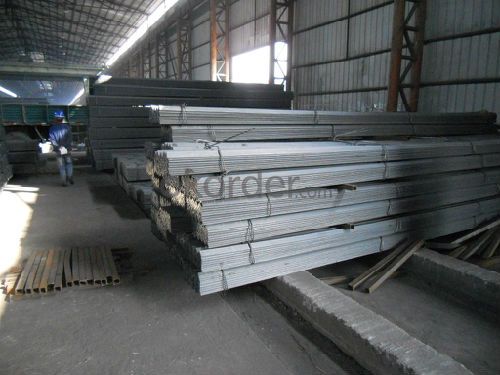
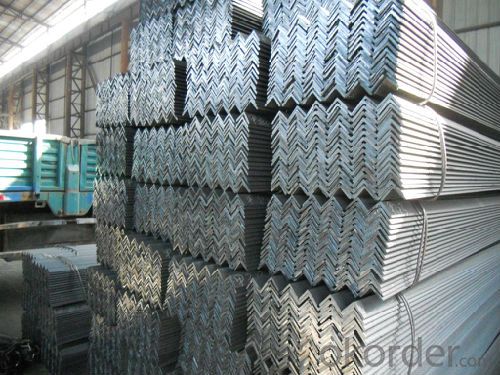
- Q: Can steel angles be used as supports for overhead doors or garage doors?
- Yes, steel angles can be used as supports for overhead doors or garage doors. Steel angles are commonly used in construction due to their strength and durability. They provide excellent support and stability for heavy doors, making them an ideal choice for overhead or garage doors. The angles can be securely attached to the walls or framework, providing a solid base for the doors to hang on and operate smoothly. Additionally, steel angles can be customized to fit the specific dimensions and weight requirements of the doors, ensuring proper support and functionality.
- Q: Are steel angles suitable for earthquake-resistant structures?
- Yes, steel angles are suitable for earthquake-resistant structures. Steel is a durable and flexible material that can withstand strong seismic forces. Steel angles provide structural stability and can be used for bracing and reinforcing various components of a building, making them an effective choice for earthquake-resistant construction.
- Q: How much is a galvanized angle L50*50*5*2500
- Probably around 40 yuan
- Q: What are the different types of steel angles used in staircases?
- There are several different types of steel angles that are commonly used in staircases. These angles serve different purposes and are chosen based on the specific requirements of the staircase design. 1. Equal Leg Angle: This is the most common type of steel angle used in staircases. It has equal length legs that form a 90-degree angle. These angles are typically used for structural support and are often found in the framework of the staircase. 2. Unequal Leg Angle: As the name suggests, unequal leg angles have legs of different lengths. These angles are used when one side of the staircase needs more support or when a certain aesthetic look is desired. They are commonly used in stair treads, risers, and stringers to provide stability and strength. 3. L-Shaped Angle: L-shaped angles are used for corner connections in staircases. They have one leg that extends straight and another that is perpendicular to it, forming an L shape. These angles are commonly used in stair handrails, balusters, and brackets to provide support and reinforcement at junctions. 4. Slotted Angle: Slotted angles are specially designed with slots along the length of the angle. These slots allow for easy adjustment and flexibility in the positioning of components in a staircase. They are often used for adjustable stair brackets, tread supports, and other elements that may require fine-tuning during installation. 5. Flat Bar Angle: Flat bar angles, also known as flat stock angles, are made from flat steel bars bent to form a right angle. These angles are used to provide additional support and reinforcement in staircases where extra strength is required. They are commonly used in heavy-duty stair applications or where there is a need for added load-bearing capacity. Overall, the choice of steel angle used in a staircase depends on factors such as load capacity, structural requirements, aesthetic considerations, and the specific design of the staircase. Consulting with a structural engineer or staircase designer can help determine the most suitable type of steel angle for a particular staircase project.
- Q: Can steel angles be used in electrical or telecommunications applications?
- Yes, steel angles can be used in electrical or telecommunications applications. Steel angles are widely used in construction and engineering industries due to their strength and versatility. In electrical applications, steel angles can be used to mount electrical equipment, such as transformers or switchgear, to provide support and stability. They can also be used as structural components in electrical substations or power transmission towers. In telecommunications applications, steel angles can be used as mounting brackets for antennas or satellite dishes. They provide a sturdy and reliable support structure for these equipment, ensuring proper signal transmission. Additionally, steel angles can be used in cable management systems to organize and secure electrical or telecommunications cables. Overall, steel angles are a durable and cost-effective solution for various electrical and telecommunications applications.
- Q: Can steel angles be used for shelving units?
- Yes, steel angles can be used for shelving units. Steel angles provide excellent strength and durability, making them suitable for supporting heavy loads on shelves. They can be easily attached to walls or used as a framework for freestanding shelves.
- Q: What is the minimum thickness for a steel angle?
- The minimum thickness for a steel angle typically depends on the specific application and the load it needs to bear. However, in general, steel angles are available in various thicknesses ranging from 1/8 inch to 1 inch or more.
- Q: What is the lifespan of steel angles?
- The lifespan of steel angles can vary depending on several factors such as the quality of the steel, the environmental conditions it is exposed to, and the level of maintenance it receives. However, with proper care and maintenance, steel angles can last for several decades or even longer.
- Q: Which is cheaper, angle iron or steel pipe?
- Angle iron and steel pipe, angle iron is cheap.
- Q: How do steel angles resist bending or deflection?
- Steel angles resist bending or deflection due to their shape and material properties. The design of steel angles, with their L-shaped cross-section, provides structural stability and strength, making them highly resistant to bending or deflection under load. The L-shape of steel angles creates two perpendicular legs, which distribute the applied load more efficiently compared to other shapes. This distribution of load allows the angles to resist bending forces, preventing them from deforming or deflecting significantly. The longer leg of the angle provides greater leverage and stiffness, enhancing its resistance to bending. Moreover, steel itself is a strong and rigid material, known for its high tensile and compressive strength. Steel angles are typically made from hot-rolled steel, which undergoes a process that further improves its structural properties. The combination of the L-shape design and the inherent strength of steel enables steel angles to withstand bending forces without significant deflection. Additionally, steel angles can be reinforced through various methods such as welding or bolting to increase their resistance to bending or deflection. Reinforcements add additional strength and stiffness to the angles, making them even more robust and capable of withstanding higher loads. In summary, steel angles resist bending or deflection due to their L-shape design, the inherent strength of steel, and possible reinforcements. These factors work together to provide structural stability and prevent excessive deformation, making steel angles a reliable choice for various construction and engineering applications.
Send your message to us
SS540 Material Angle Steel High Quality
- Loading Port:
- Tianjin
- Payment Terms:
- TT or LC
- Min Order Qty:
- 25 m.t.
- Supply Capability:
- 2000 m.t./month
OKorder Service Pledge
OKorder Financial Service
Similar products
Hot products
Hot Searches
Related keywords
